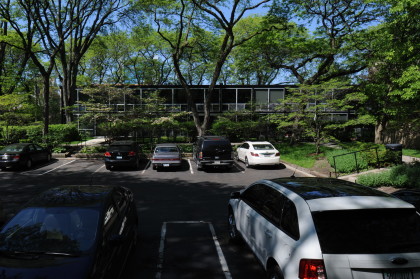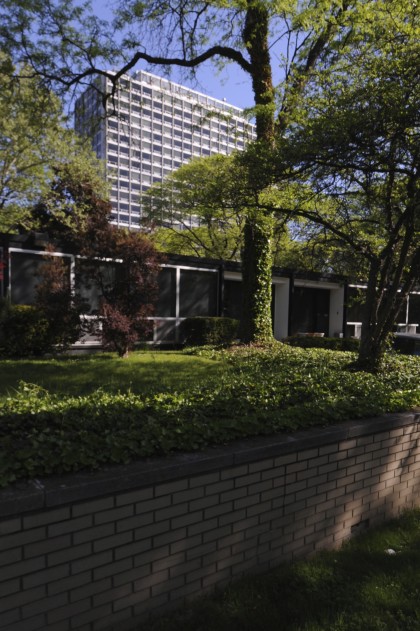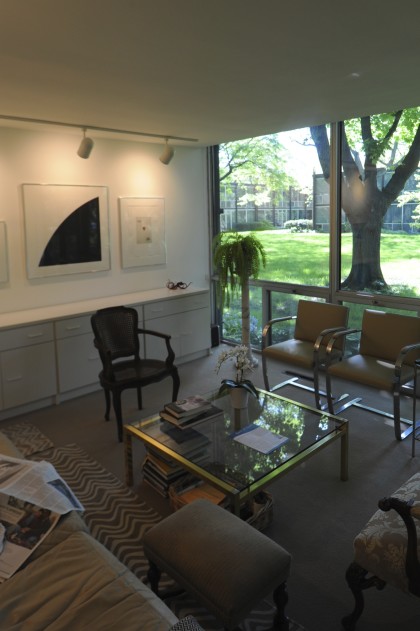I love to revisit significant architectural projects over and over in their mature years to see how they are working and how people are using them. Alvar Aalto was fond of saying he wanted his buildings to be judged by how they looked after 50 years. I think that is a good yardstick.
I had that opportunity to do the 50+ year test recently when I spent a morning walking around Lafayette Park in Detroit, designed in 1956 by Mies van der Rohe. I first saw this multi-block neighborhood with a large section of townhomes and three residential towers 25 years ago and was really impressed at the time because it was in impeccable shape—nicely inhabited with great ethnic diversity. At the time, Detroit was still a relatively thriving city with several great neighborhoods in the ring around downtown where Lafayette Park is located.

Seeing the city again now is an entirely different experience. Many of the neighborhoods around Lafayette Park have not fared well at all; in fact, a good number have been demolished. Others have been abandoned and boarded up. There are some house owners still putting up a valiant effort with tended lawns and a struggle to look respectable, but the houses behind are unoccupied. There are deep signs of struggling all around downtown, but when you go into Lafayette Park and it looks amazingly intact and healthy.

Mies’ design followed Le Corbusier’s concept of towers in a park within a city, and clearly this notion has succeeded here. Everything is handled remarkably well. The parking is submerged three feet so as to minimize the awareness of cars. They are visible for surveillance sake; just not as prominent. There is a nice playground for kids. All the vegetation has grown in and matured in three tiers — tall trees for deep shade, lower flowering trees for color, and ground-hugging shrubs and grasses that give a soft, lush quality to the place. The buildings are quiet, black steel with contrasting clear anodized aluminum windows, all built to a consistent, repetitive standard throughout the development.

Lafayette Park is a co-op neighborhood with multiple legal entities that help to maintain standards and upkeep. While it’s not true mixed-use, there is a Mies-designed shopping center close by. What’s particularly rewarding is to see how well everything is tended; there’s obviously a strong sense of pride among the people who live here. One of the co-ops installed new thermal pane windows several years ago to replace the original ones, but did it very carefully so as to keep the design integrity. Views from the units are out to well-defined green spaces and maintain “eyes on the street” for most of the public realm. The one- and two-story townhouses have relatively small rooms, but mostly are large enough to accommodate families. Some of them have attached parking spaces, and some have shared parking. Many have outdoor courts although most outdoor space is common, not private.
I met a guy while walking around who had lived in Lafayette Park for 16 years. He’d been a school principal, now retired, and he talked about how great it is to live there. It’s a stable, popular neighborhood where property values have actually increased, and it’s a place where people know their neighbors. His unit has modest spaces, but the views outside to the gardens and to comings and goings of his neighbors are generous and beautiful. The unit is zoned perfectly for living privately while being part of a larger community. A small but significant example of careful functional planning: one goes downstairs to an inner hallway that connects all units where the trash is tidily stored in bins until it is removed on collection day.

I came away from Lafayette Park with an incredibly positive impression. Have we been too quick to condemn modern planning and urban design principles that emphasized the virtues of light, air and connection to nature? Have we bought into the urbanism touted by Jane Jacobs to the exclusion of other equally appealing patterns? (It is precisely those street-oriented mixed-use neighborhoods of three- to five-story brick buildings that are dying in other parts of Detroit.) Is Lafayette Park just the sort of middle ground between hardscape urbanism and leafy, sprawling suburban neighborhoods that might achieve a genteel density that we need to be achieving today?